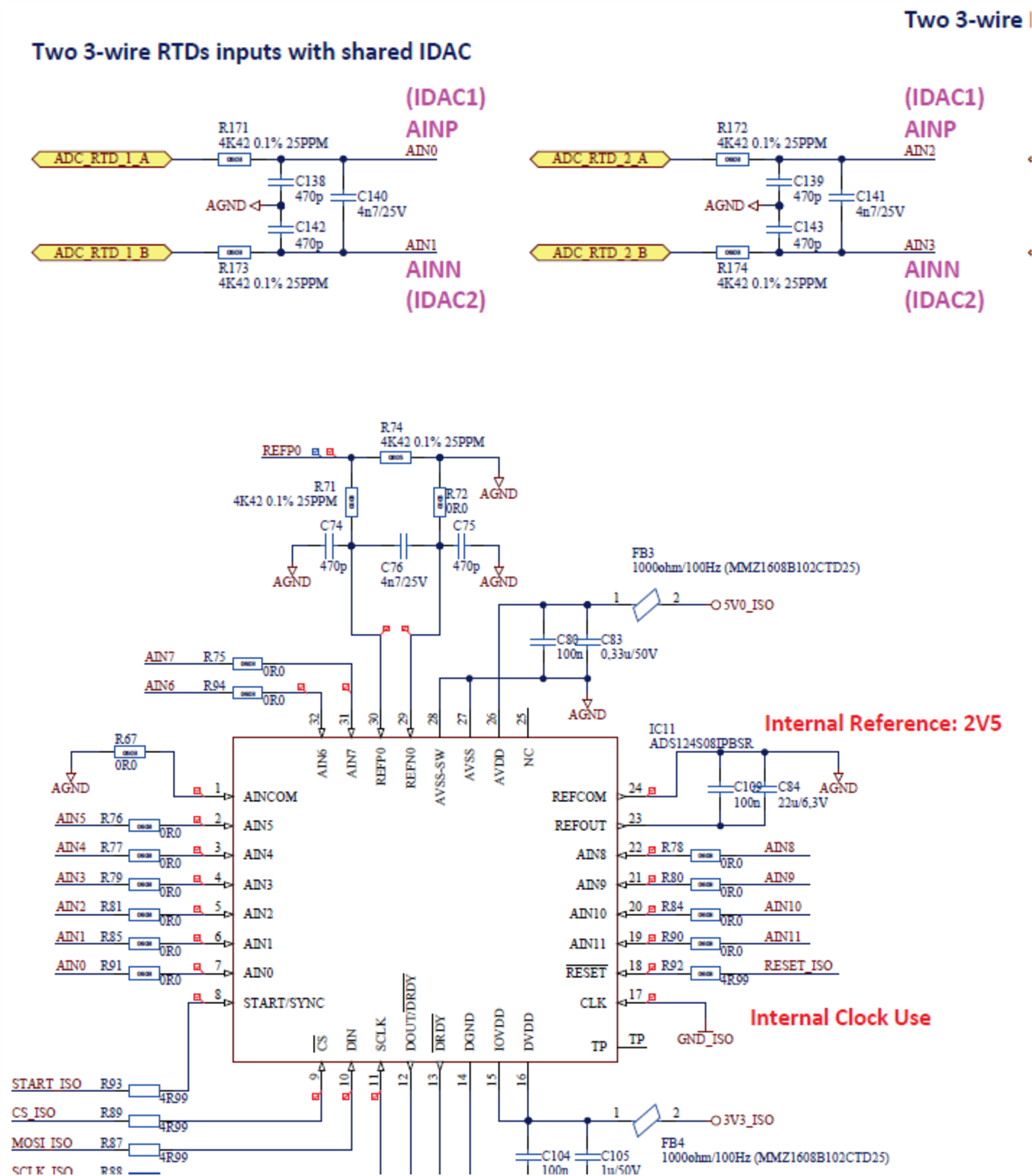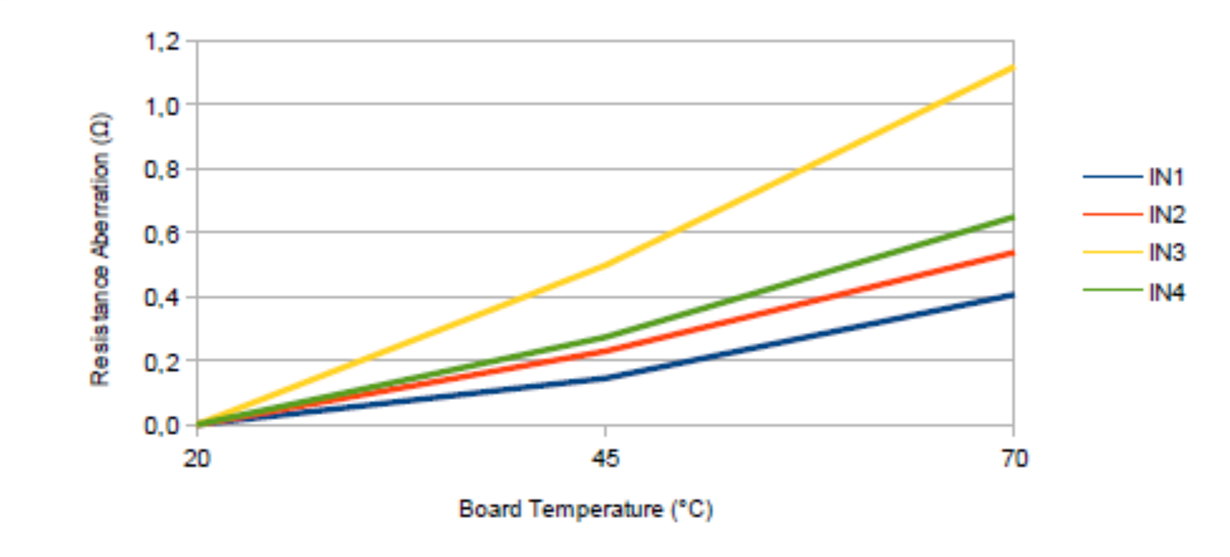During the tests we found temperature dependence of resistance measurement of PT100 sensors connected to inputs ADS124S08IPBSR.
Finally, we did a test where the PCB with ADS124S08 was inside the climate chamber and the PT100 sensors outside.
Below are the measurement results. The inputs use very precise resistors with a tolerance of 0.1%.
Do you have any idea where we could make a mistake?
Kind Regards,
Tom



